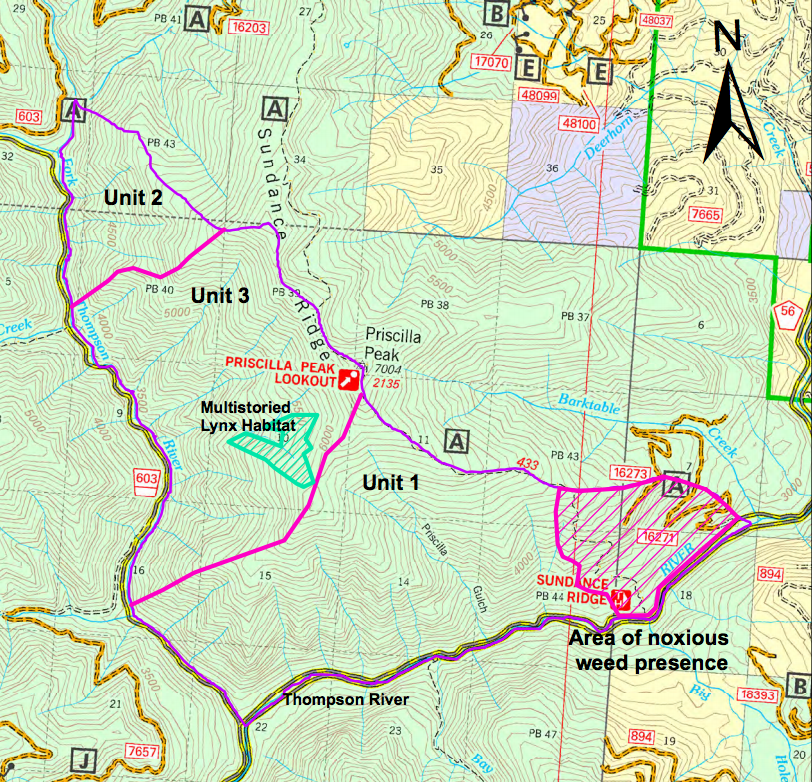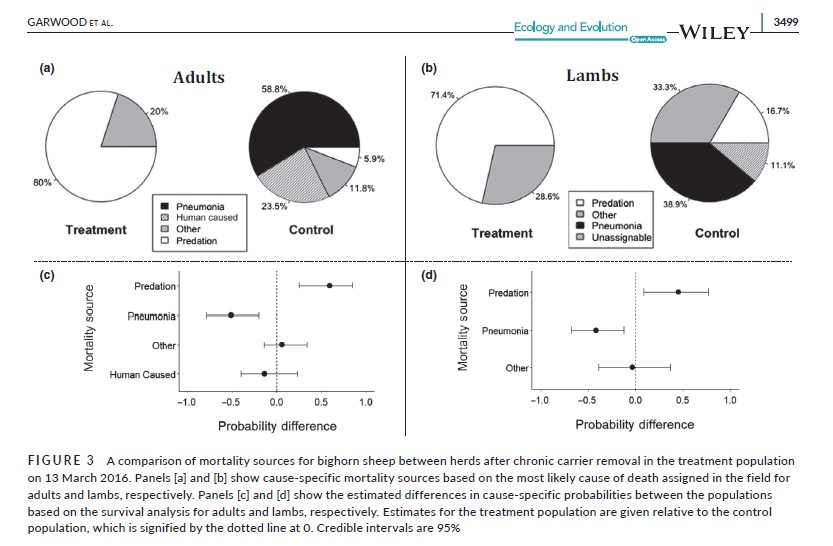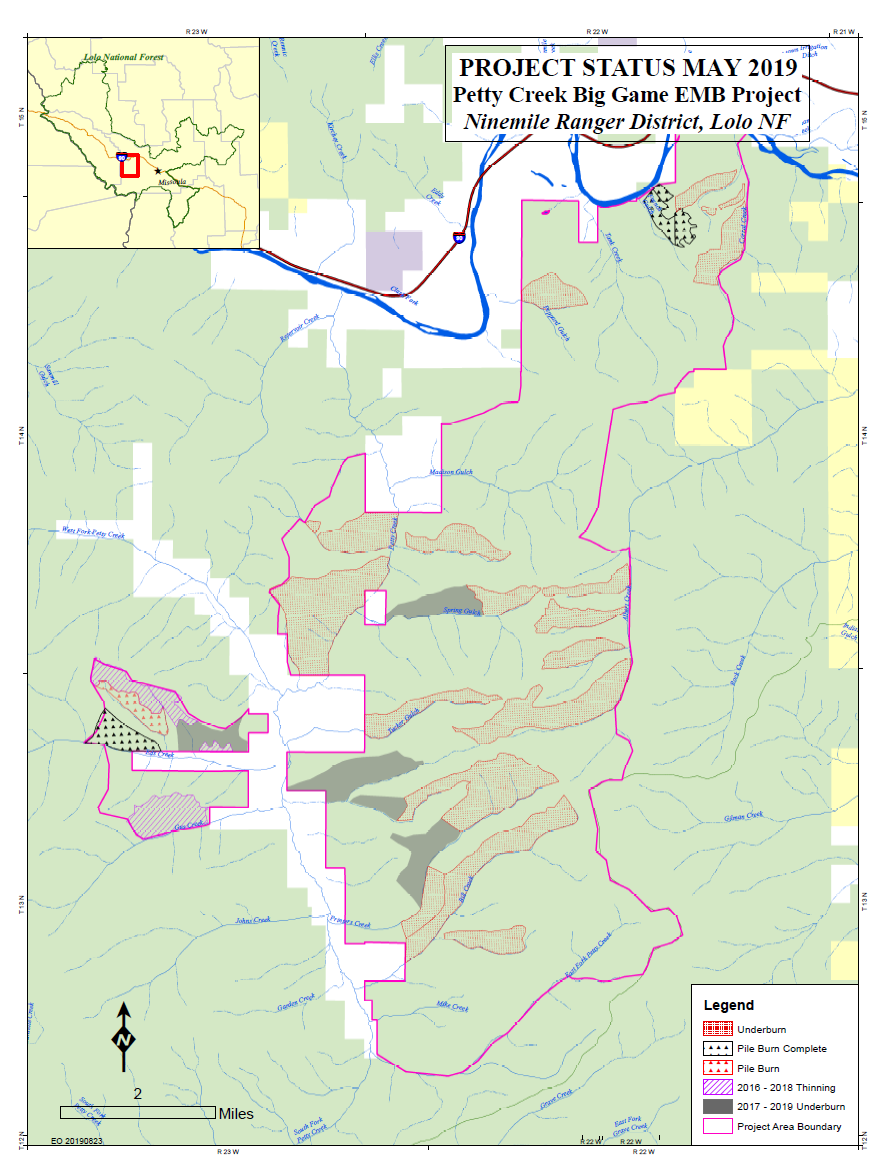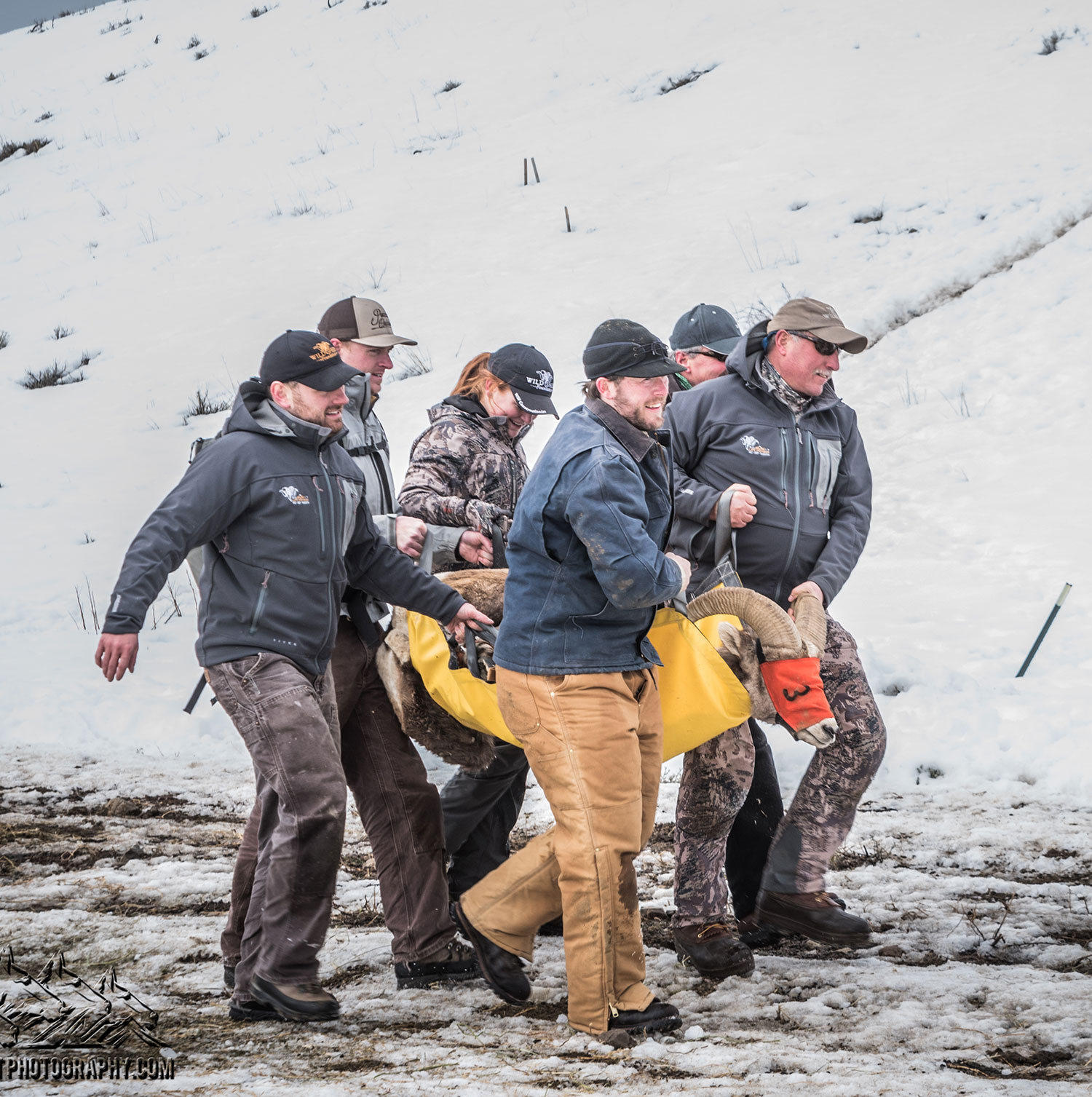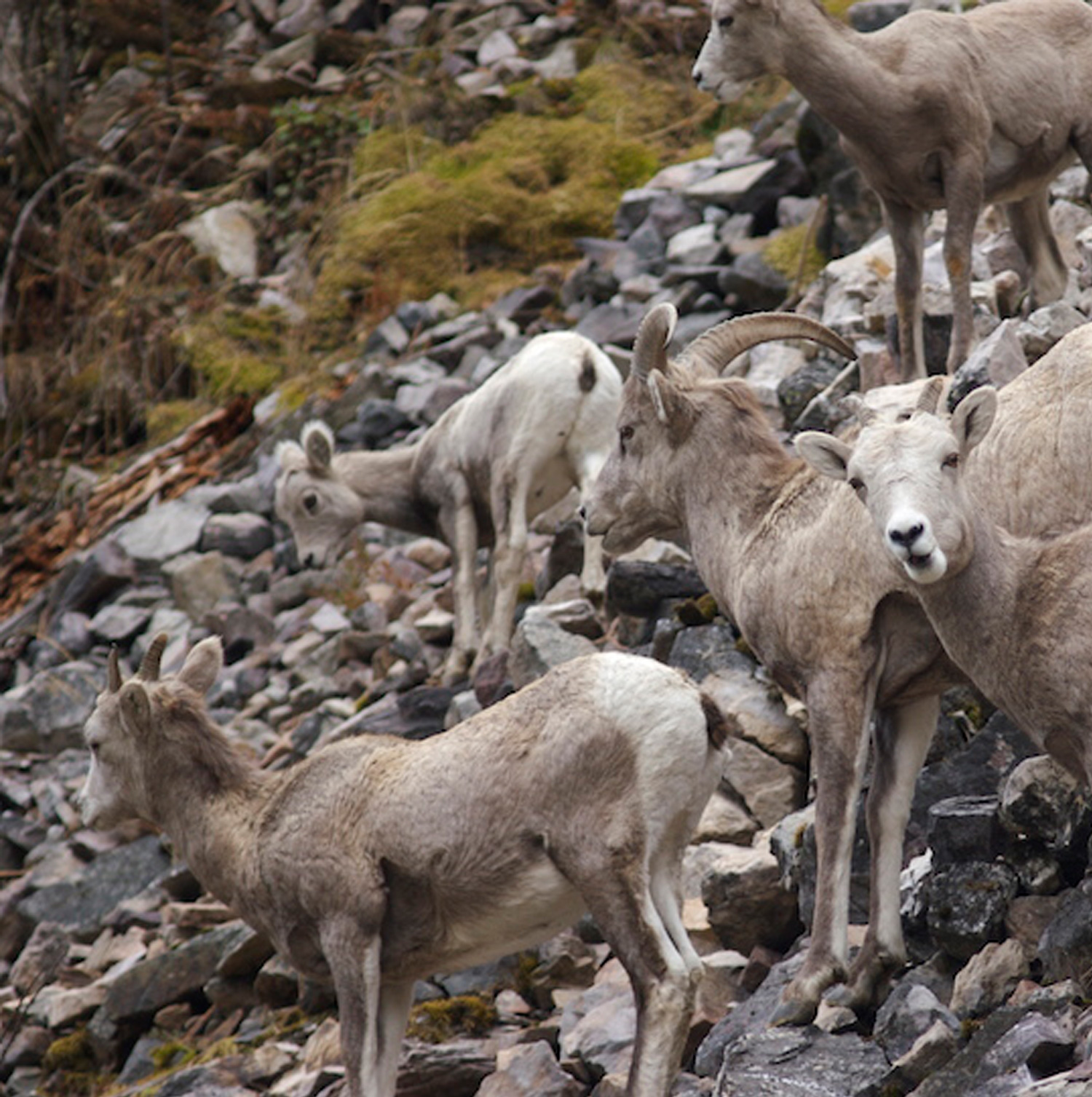Priscilla Peak Bighorn Sheep Habitat Prescribed Burning
Project Summary
Because of the recent population decline (beginning in 2008) that is suspected to have been caused by highway and predation-related mortality, any action to improve conditions for this sheep population would help. Although bighorn sheep are currently present in the area, habitat conditions have declined due to lack of fire and heavy tree and brush growth. The current low population could be related to the long-term habitat decline in the area. Increased conifer encroachment over time could make predators more efficient and thus have a greater effect on population numbers. Reduced forage quality and quantity from conifer encroachment may be making the ranch lands along highway 200 more appealing than the upland natural areas increasing the exposure to highway mortality. Comparison of historical aerial photos (1947- 1949) with current aerial photos (2000, 2005) displays a readily apparent increase in forest cover. This corresponds with the records of the Plains/Thompson Falls Ranger District identifying few fires in the areas. Some understory burning has occurred 20-30 years ago in some lower elevation stands below Priscilla Peak to maintain larger ponderosa pine stands, kill encroaching Douglas-fir, and stimulate resprouting of shrubs and herbaceous plants. Reburning these areas is needed to maintain the abundant forage lost as shrubs grow out of reach and become “clubbed” from heavy use by elk, sheep, whitetail and mule deer.

